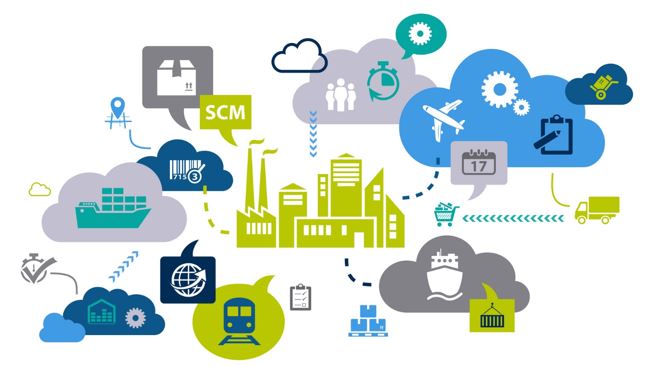
For certain people today, their bond with each other is not apparent either. While the technical concept makes it evident that supply chain integration is an operation that incorporates main procedures, producing a product, service, and value knowledge for the customer from the producer to the end-user.
Logistics, on the other hand, is the control of the production process by which the reliable and effective flow and storage of goods, storage, facilities, and related information from the point of origin to the customer is enforced and regulated to satisfy consumer needs. Separation also causes problems. Supply chain management is more than conventional and more than contemporary, versatile App Developer in Dubai logistics since its content far exceeds that of logistics. It continues from the concepts.
The industrial digitalization and data processing direction of industrial revolution 4.0 has, of course, had a dramatic impact not just on manufacturing but also on services. The book contains Logistical 4.0 by comparison to describe modifications that impact the field of logistics services. Network connexion, incorporation of web services into systems, targeted data gathering at all stages, online and batch management and storage, and decisions made through the implementation of artificial intelligence ( AI) define the change impacting the entire supply chain management.
Contents
Production knowledge-Review
The secret to evaluating the significant data effect is the accumulated data continuously. The latest techniques-data mining-are focused on the detection of non-trivial associations on vast volumes of data. The initial step for this is the presence of data obtained, processed, and organized properly. The first task is the online structuring and documentation of data obtained from equipment and instruments.
Logistics and AI
In the production process, AI is now playing an important part. The effect of AI on traditional logistics is to alter the way goods are shipped internationally, either by predictive modeling or through vast quantities of Mobile App Developer in Dubai data, robots, or driverless cars.
-
Prognostics and preparation
In conjunction with the strength of massive data volumes, AI will significantly enhance the transparency and efficacy with which logistics managers predict demand and schedule capability, enabling them to be proactive in resource allocation. Managers can use the data gathered to anticipate the criteria for the number of semi-trailers by using AI to evaluate historical and current tiles and produce predictive data and can mobilize the semi-trailers where they are most required. It decreases the running expenses. AI will even analyze a resource condition and propose allocations much more quickly than automated systems will.
A fascinating case is that of UPS, which has used AI data to enhance its vehicles’ route planning. They noticed that 10 percent of turns are to the left in total. It saved 38 million liters of gasoline and shipped 350,000 more deliveries a year by removing the left turns made by its drivers in a right-hand traffic. It happened even though there were longer routes intended for the drivers.
-
Robotics factories
Robots are increasingly replacing humans in the tasks of locating, monitoring, and moving inventories in warehouses because of the use of AI. For instance, It has created a sophisticated robot-based storage solution for supermarket chains in the United Kingdom. Robots use their automated order fulfillment center in Andover, near London, to store and raise food along an aluminum grid or “hive” system with oversight by human employees. From two hours in the old warehouse to five to 15 minutes in the current facility, has reduced the order fulfillment period.
-
Implementation of quality and service to clients
To significantly boost operating performance, AI can produce useful operational data on commodity movements along a supply chain. This expertise helps companies minimize the expense of operation and inventory while reacting to customers more quickly and delivering a better quality of customer support.
-
Institution for the workforce
Thanks to the study, for the workers working in the supply chain, all high-traffic, demanding times can be, and the occurrence of overtime and fatigue can be with good job organization.
-
Enhancement of Path
The incorporation into the infrastructure of online GPS, temperature, dynamic routing, fleet, and historical data helps apps to create ideal transport routes The ‘no turn left rule’ used among UPS is one fascinating application of this. Based on the significant data research that turning left in a wide arc would lead the organization to have an otherwise avoidable time, power, and emissions surplus.
Contact me for further details!

